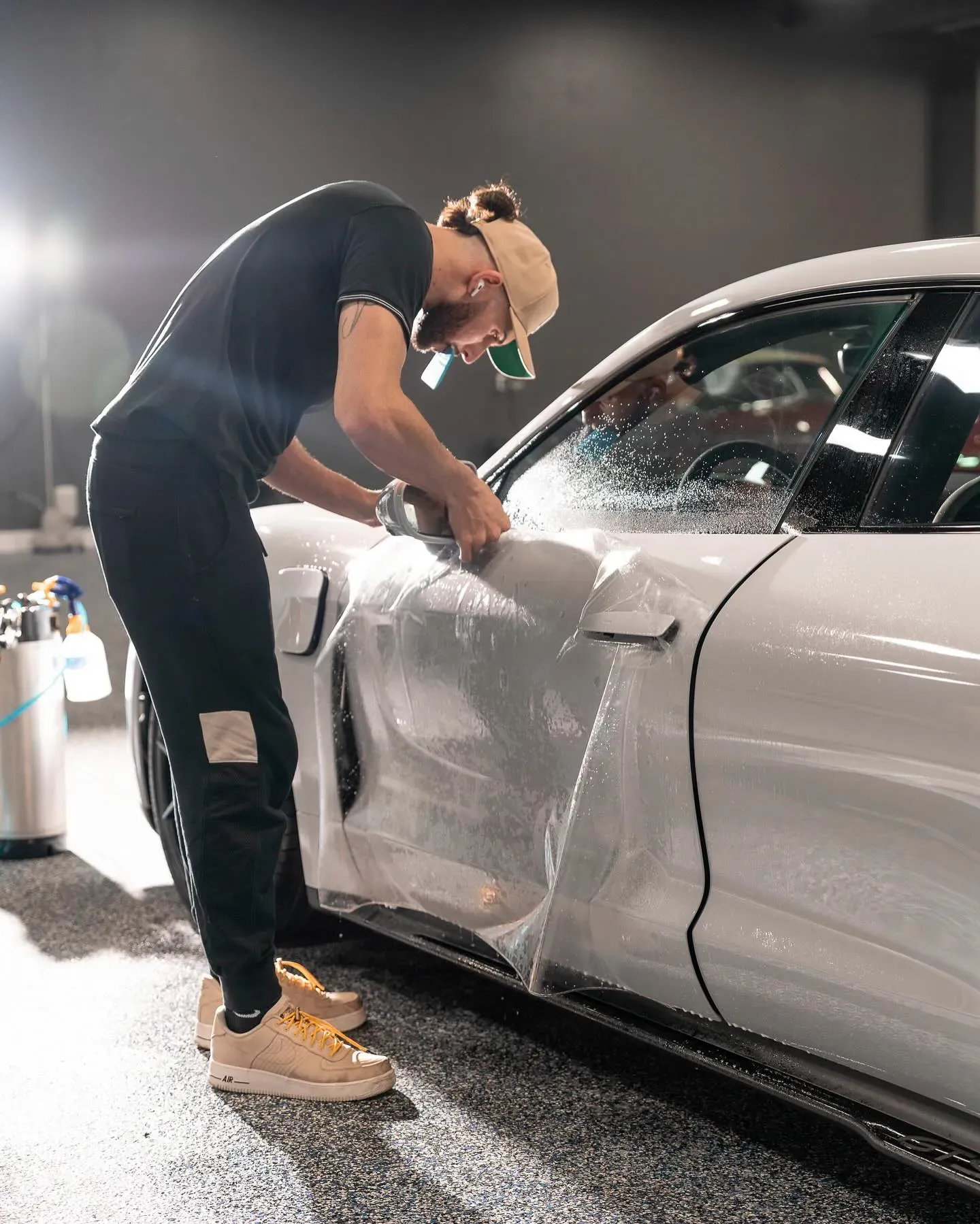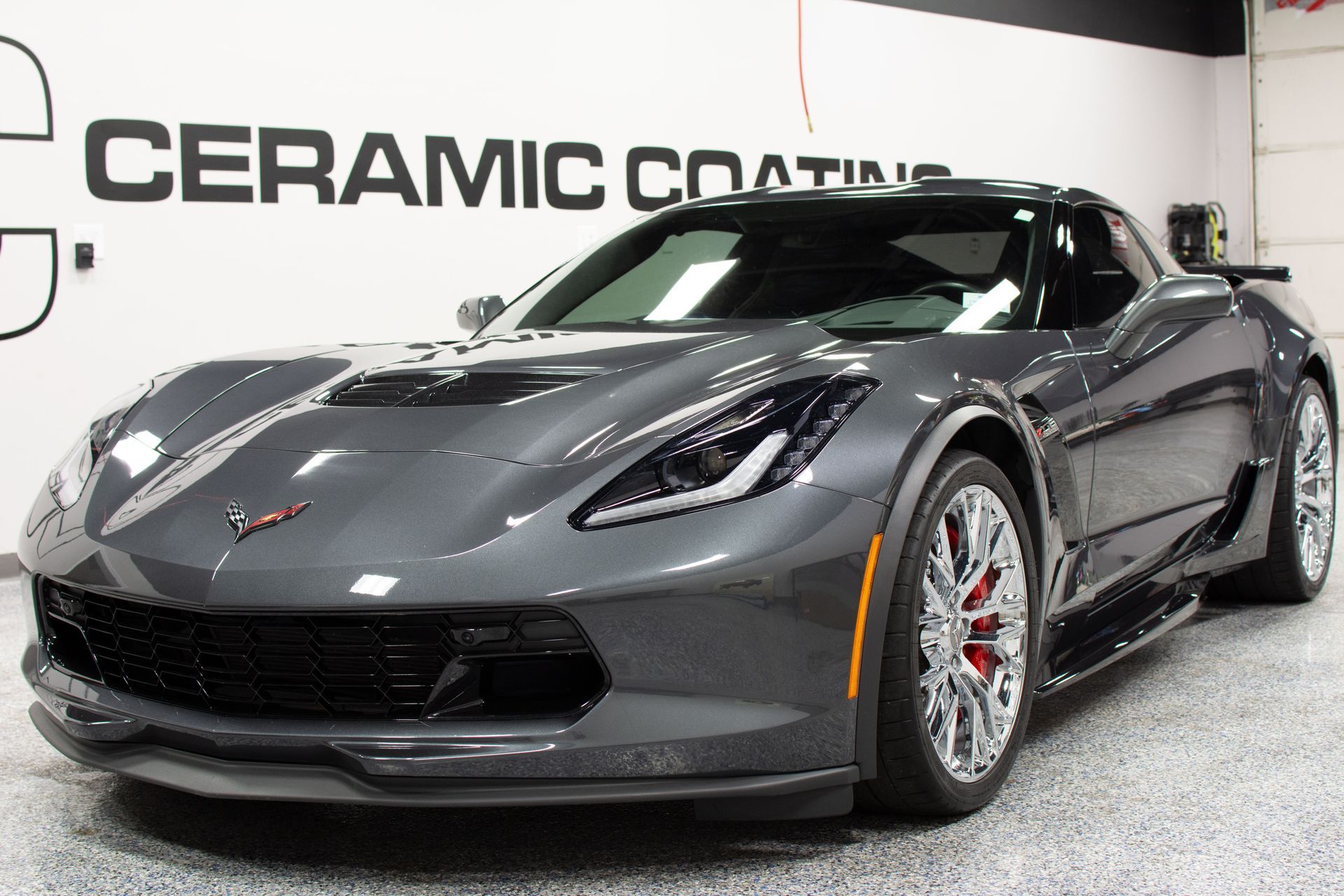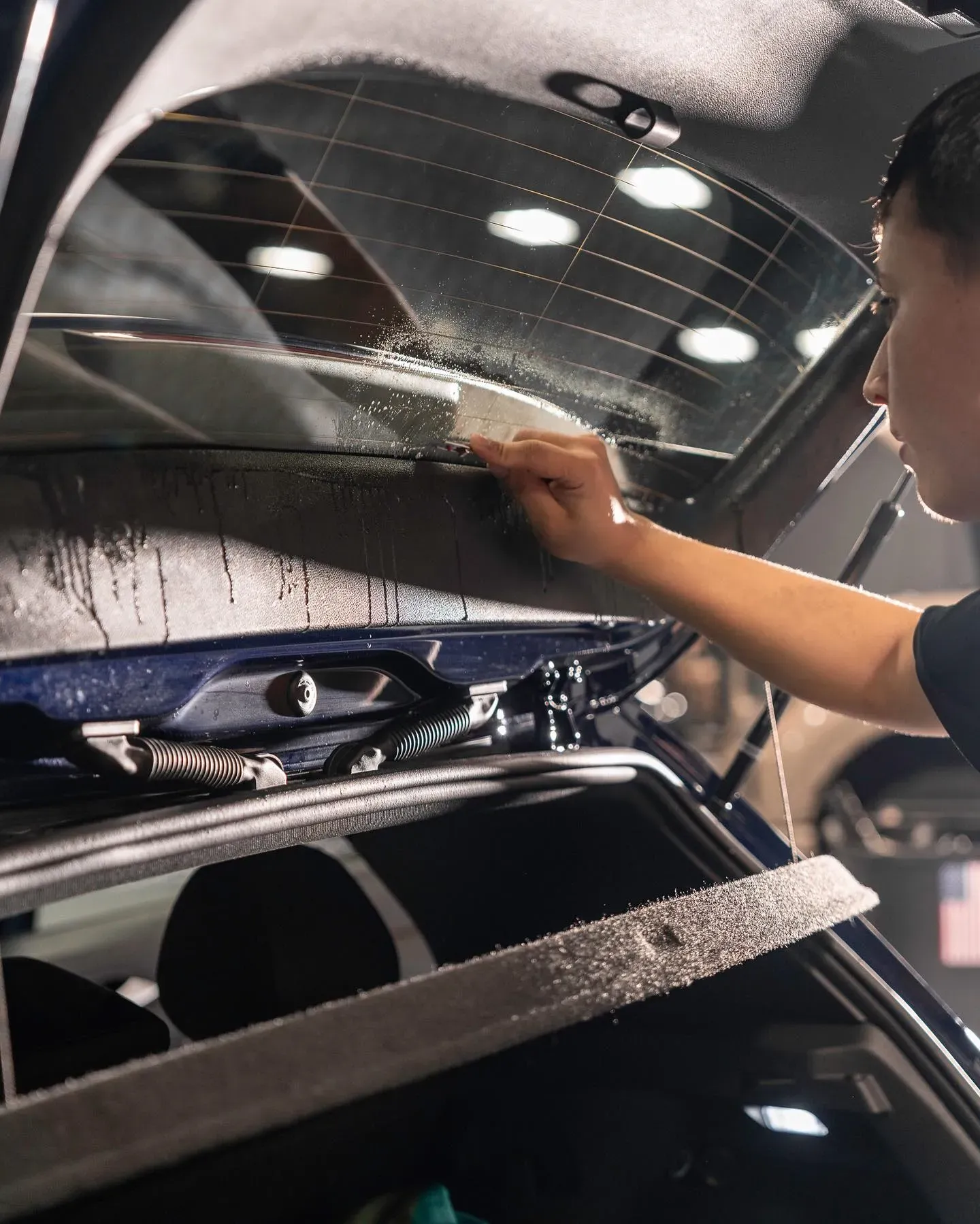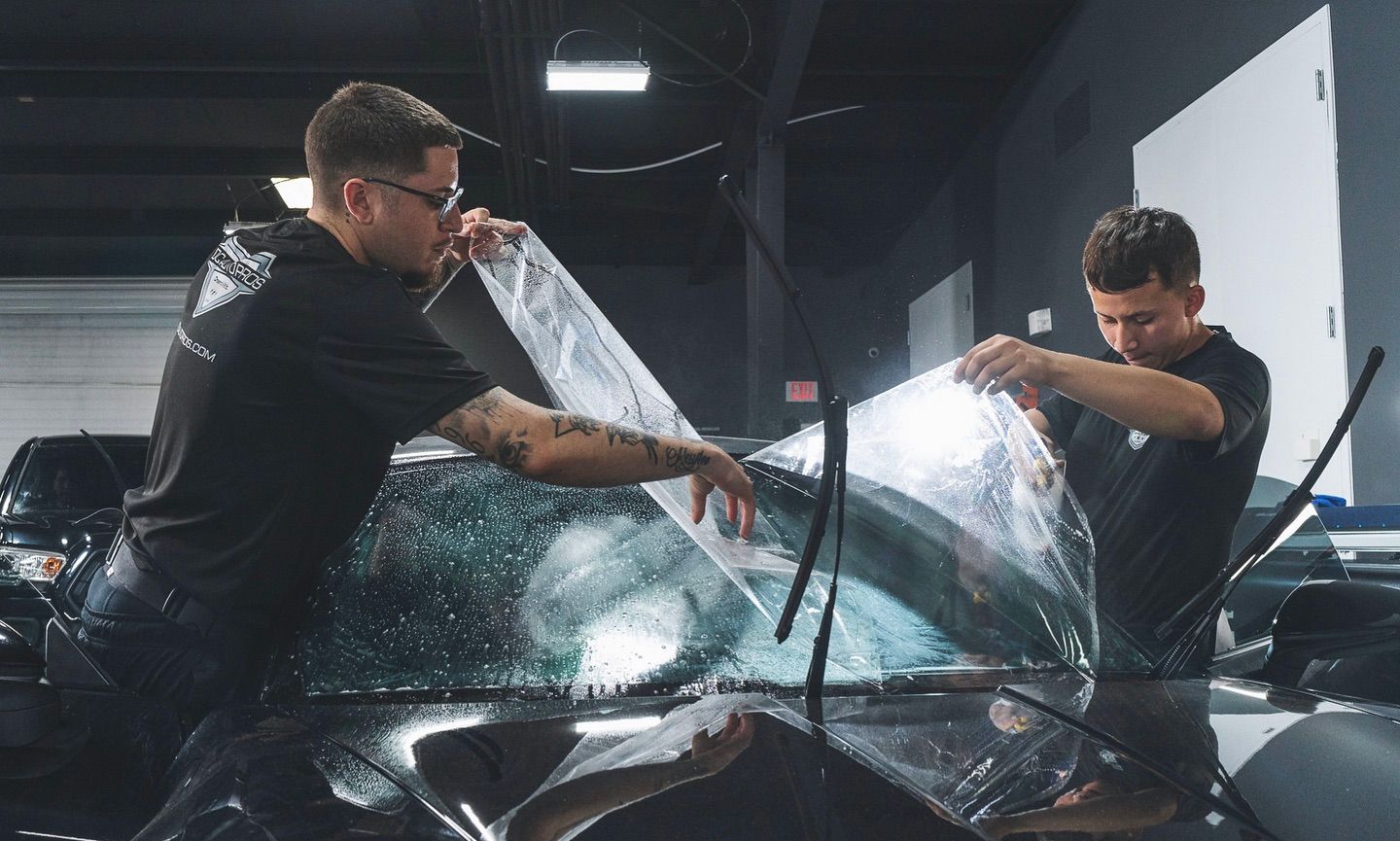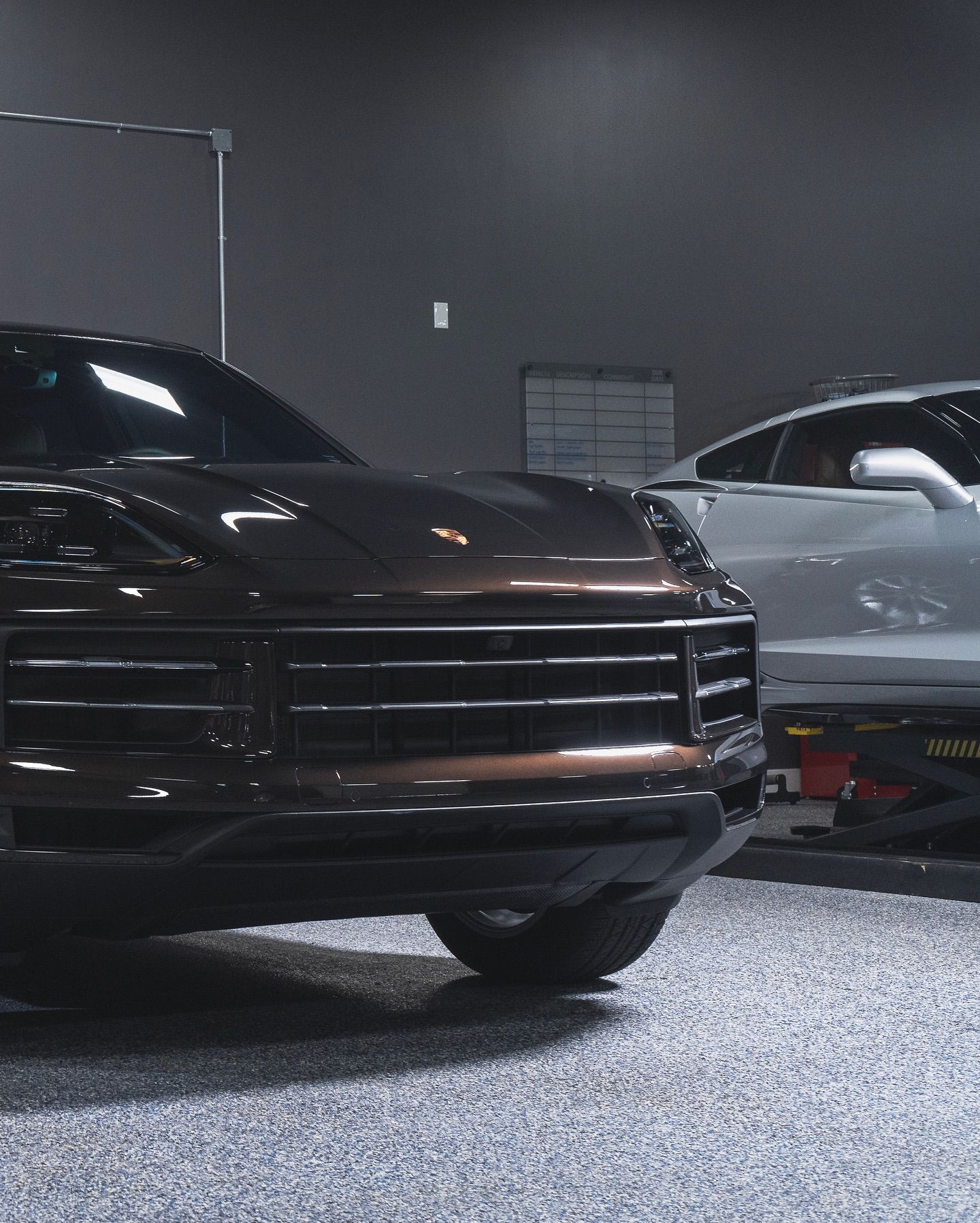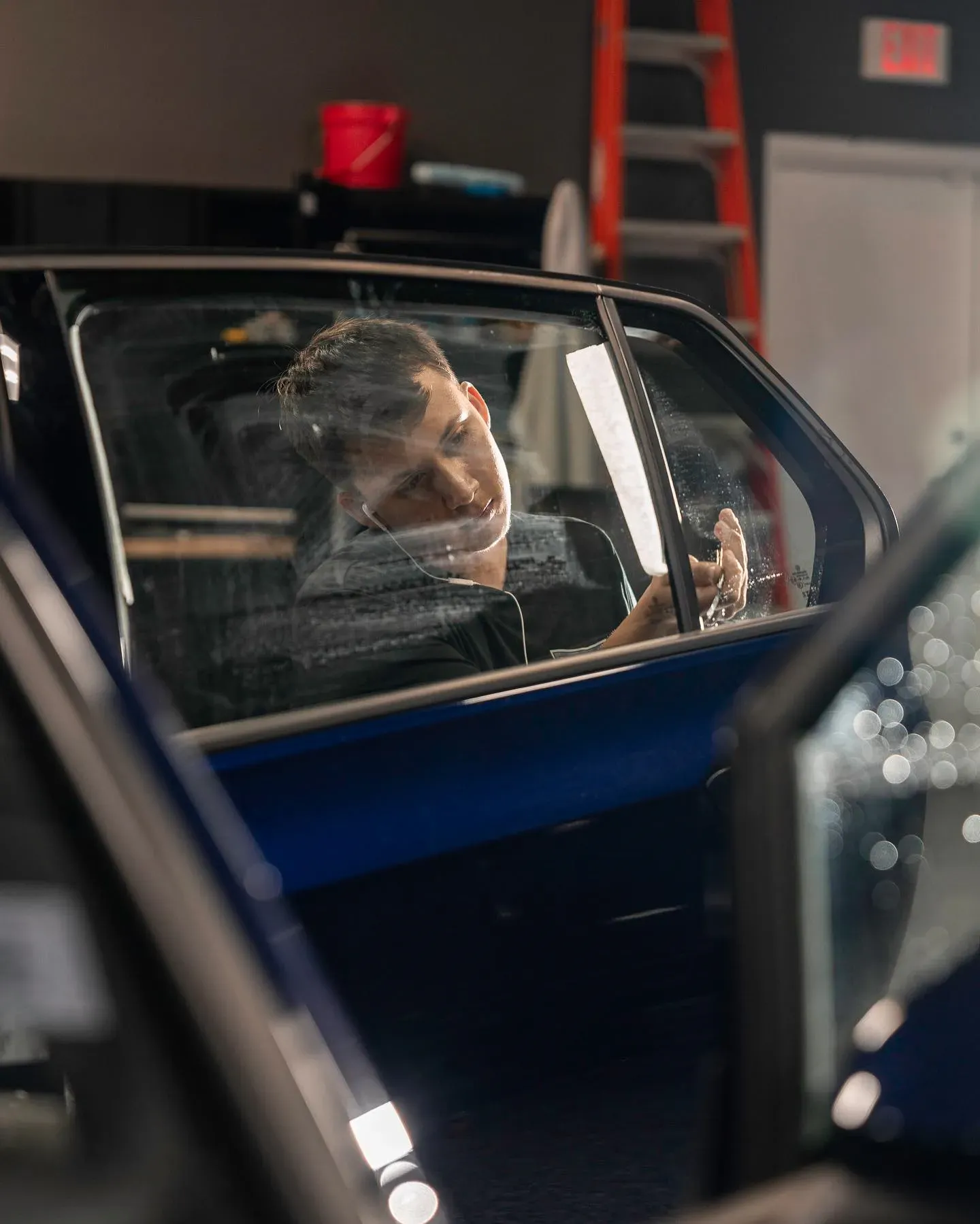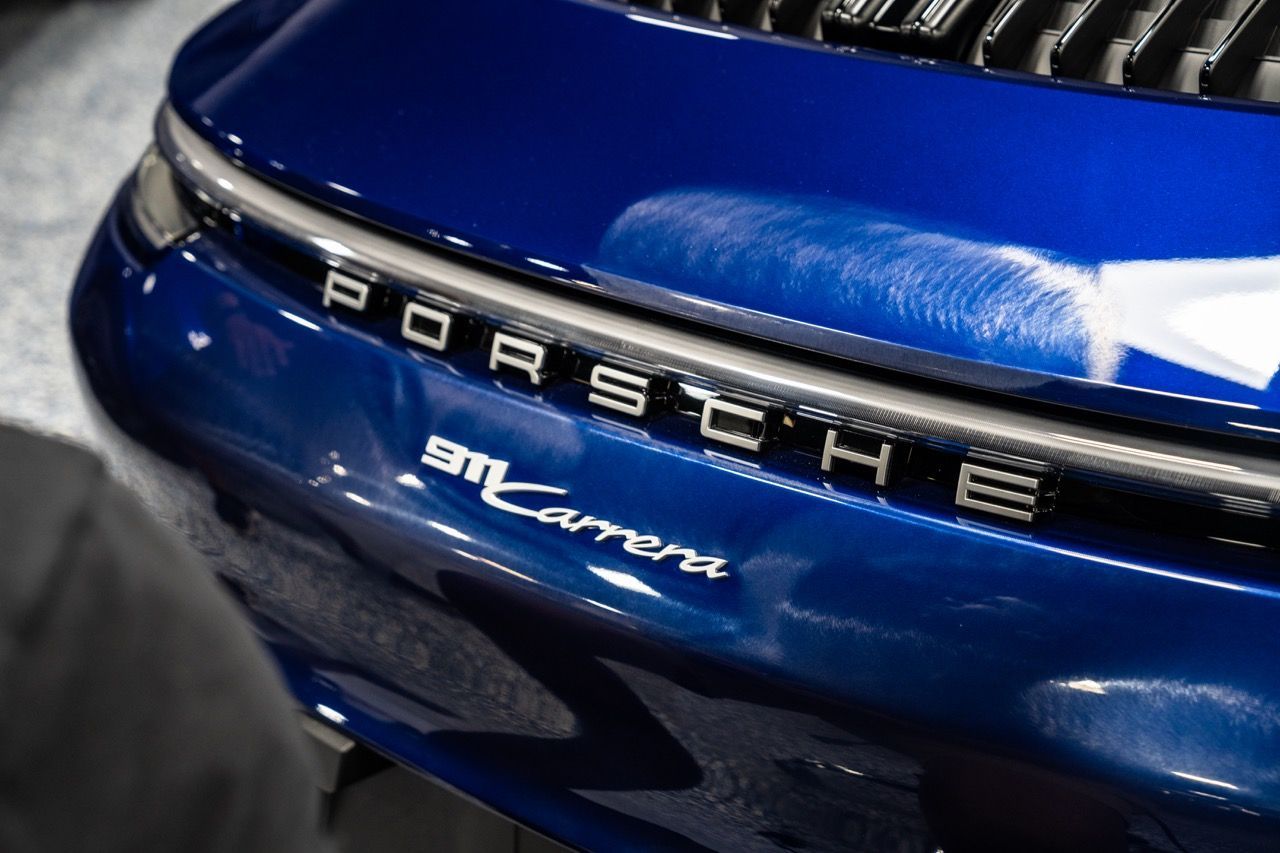Can Ceramic Coating Fix Scratches? What You Need to Know
Ceramic coating has become a popular solution for car owners seeking long-lasting protection for their vehicles. However, there is a common misconception that ceramic coatings can fix scratches in the paint. In this blog, we’ll clear up the myth and explain the process involved in fixing scratches, along with the proper way to apply ceramic coatings for optimal protection.
What is Ceramic Coating?
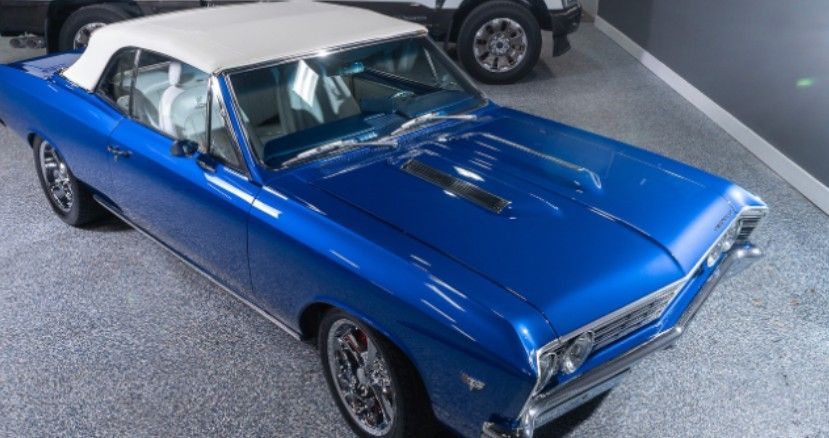
Ceramic coating is a liquid polymer applied to the exterior surfaces of a vehicle, forming a durable protective layer. This layer chemically bonds with the paintwork, providing a hydrophobic surface that repels water, dirt, and other contaminants. Typically made from silica, ceramic coatings create a strong, long-lasting shield that protects the vehicle's paint from damage.
The coating not only enhances the visual appeal of your car but also makes maintenance easier. Water beads off the surface, reducing the chances of water spots and grime sticking to the vehicle. It’s important to note that ceramic coatings are not meant to fix physical damage, such as scratches. Instead, they act as a protective layer that prevents further wear and tear, making your car easier to clean and maintain.
The Role of Ceramic Coatings in Vehicle Protection
While ceramic coatings cannot fix existing scratches, they offer several protective benefits that contribute to the longevity of your vehicle's paint. Here’s how:
- Scratch Resistance: Ceramic coatings create a protective barrier that helps resist minor abrasions and swirl marks, but it doesn’t remove deep scratches.
- UV Protection: The coating protects your vehicle from harmful UV rays that cause fading, oxidation, and paint deterioration.
- Chemical Resistance: It forms a shield against acidic contaminants like bird droppings, tree sap, and road salts, which can damage your car's paint over time.
- Hydrophobic Properties: Water and dirt slide off the coated surface, reducing the buildup of grime and making washing easier.
While ceramic coatings provide excellent protection, they need to be applied after the paint has been restored to its original condition through a process like paint correction. This ensures that the coating bonds effectively to a smooth and clean surface.
Can Ceramic Coating Fix Scratches? Debunking Common Myths
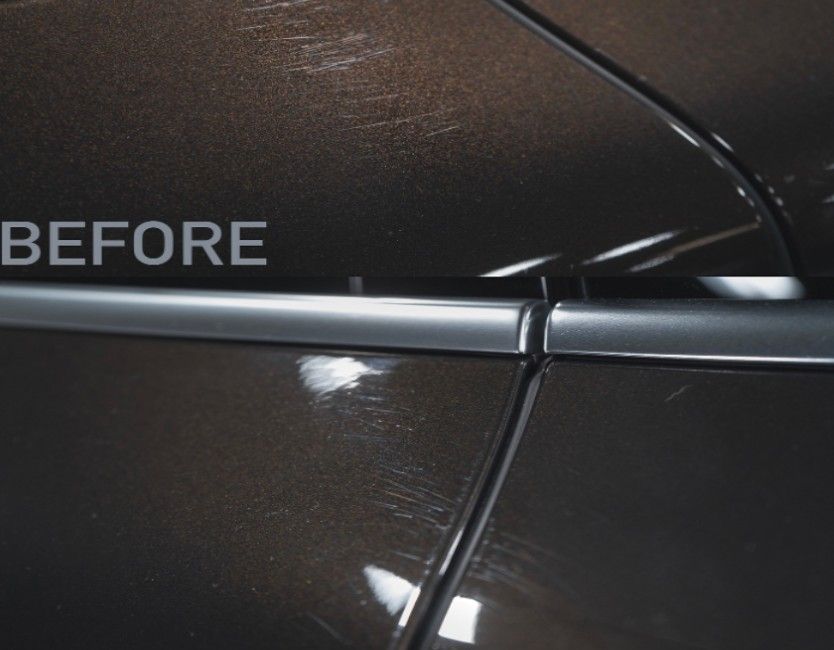
One of the most common myths surrounding ceramic coatings is that they can fix existing scratches in your vehicle’s paint. The truth is, ceramic coating is designed to protect the paint and prevent new scratches or damage, but it cannot repair or fill in deep scratches or imperfections.
If your car’s paint has scratches or swirl marks, these need to be addressed before applying ceramic coating. The coating cannot “heal” these imperfections, and it’s essential to restore the paintwork first for the best results.
Ceramic Coating vs. Paint Correction: Key Differences
While ceramic coatings provide a durable protective layer, paint correction is the process of repairing and restoring your vehicle’s paint to a like-new condition by removing surface imperfections, including scratches, swirl marks, and oxidation. Let’s break down the differences:
- Paint Correction: Paint correction is a multi-step process that involves polishing the vehicle’s paint to remove imperfections and restore its shine. It is typically performed by professionals using a machine polisher and specialized compounds to gently remove layers of clear coat, smoothing out the surface.
- Ceramic Coating: Once the paint correction process is complete, a ceramic coating is applied to seal in the newly restored paint. The coating protects the surface from contaminants, UV rays, and minor abrasions, but it doesn’t repair existing damage.
In essence, paint correction addresses the visual flaws and imperfections in the paint, while ceramic coating acts as a protective shield against future damage.
The Process of Fixing Scratches with Professional Paint Correction
If your vehicle has scratches, paint correction is the solution to restore your car’s finish. Here’s an overview of the process:
Step 1: Assessing the Damage to Your Vehicle’s Paint
The first step in paint correction is to thoroughly inspect the vehicle's paint to assess the extent of the damage. This includes evaluating the depth of scratches, swirl marks, and other imperfections. A trained professional will use specialized tools, such as a paint depth gauge, to determine how much of the clear coat can be safely removed during the correction process.
At DC Auto Pros in Naples, FL, we offer a comprehensive inspection to ensure we only remove the necessary amount of paint while preserving the integrity of your vehicle's surface.
Step 2: Paint Correction Explained
Once the assessment is complete, the paint correction process begins. Paint correction typically involves several stages:
- Compounding: The initial step involves using a cutting compound to remove the deeper scratches and imperfections from the paint surface. This stage may involve the use of a dual-action polisher to gently break down the compound and smooth the surface.
- Polishing: After compounding, the paint is polished to remove any haze or swirls left behind. This stage refines the surface, enhancing the vehicle's gloss and shine.
- Finishing: The final step in paint correction involves using a fine polish to restore the surface to a mirror-like finish. This removes any remaining micro-abrasions and leaves the vehicle with a smooth, shiny surface.
Paint correction can take several hours or more, depending on the size of the vehicle and the extent of the damage. It’s a meticulous process that requires skill and experience to ensure the paint is properly restored.
Step 3: The Importance of Professional Expertise in Paint Correction
While DIY kits are available, paint correction is a delicate process that requires professional expertise. Improper technique can lead to further damage to the paint, such as burning through the clear coat, which can result in expensive repairs. Professionals like those at DC Auto Pros in Naples have the right tools and experience to restore your vehicle’s paint without causing harm.
Professionals also use high-quality compounds and polishes that are designed to work with your car’s specific paint type, ensuring optimal results. They are trained to identify areas that need more attention and to avoid over-polishing or under-polishing, both of which can affect the final outcome.
The Final Step: Applying Ceramic Coating
Once the paint correction is complete, the vehicle is thoroughly cleaned, and the surface is prepared for the application of ceramic coating. This final layer will protect the restored paint from future damage and ensure your vehicle remains in top condition.
By applying ceramic coating after paint correction, you’ll enjoy long-term protection against environmental contaminants, minor abrasions, and UV damage, while keeping your car looking shiny and new for years to come. While ceramic coating provides a crucial layer of protection for your vehicle’s paint, it cannot fix existing scratches. The solution to restoring your vehicle’s appearance is paint correction, a professional process that removes imperfections and leaves your car with a smooth, flawless finish. After this, applying a ceramic coating ensures your vehicle remains protected and easier to maintain in the future.
Why Apply Ceramic Coating After Paint Correction?

Ceramic coating should always be applied after paint correction for several key reasons. First and foremost, applying ceramic coating to a surface that hasn’t been corrected means you're sealing in imperfections, scratches, swirl marks, or oxidation. This would diminish the effectiveness of the coating and compromise its ability to protect the paint properly.
Here’s why you need to perform paint correction before applying ceramic coating:
- Smooth Surface for Better Bonding: Paint correction removes imperfections and restores the paint to a smooth finish, ensuring the ceramic coating bonds properly to the paint. The smoother the surface, the better the ceramic coating will adhere and provide long-lasting protection.
- Enhanced Appearance: Paint correction eliminates scratches and swirl marks, allowing the ceramic coating to enhance the overall gloss and clarity of the paint. A smooth, flawless surface is the perfect canvas for the coating, resulting in a shiny, reflective finish.
- Optimal Protection: After paint correction, the surface is now free of contaminants and imperfections, which means the ceramic coating can form an even, consistent layer of protection. This ensures that the vehicle remains shielded from environmental contaminants, UV rays, and other damage.
How Ceramic Coating Protects Restored Paintwork
Once the paint correction process has been completed, the paint is fully restored to its original, glossy condition. Applying a ceramic coating at this stage ensures that the restored paintwork is protected from future damage. Here's how ceramic coatings protect your vehicle’s paint:
- Hydrophobic Protection: Ceramic coatings are highly hydrophobic, meaning they repel water. This property prevents water from staying on the surface, reducing the chances of water spots, mineral deposits, and the accumulation of grime. It keeps the car cleaner for longer and makes washing easier.
- Resistance to Contaminants: The coating forms a protective barrier against contaminants like bird droppings, tree sap, dirt, and road salts. These substances are known to damage paint over time, but a ceramic coating prevents them from adhering to the surface, making it easier to clean them off without leaving any stains or marks.
- Scratch Resistance: Ceramic coatings provide an additional layer of protection against minor scratches. While they don’t prevent deep scratches, they can help minimize the appearance of swirl marks and light abrasions, ensuring that your vehicle's paint stays looking fresh.
- UV Protection: The coating acts as a shield against UV rays, preventing oxidation and fading of the paint. It helps maintain the vibrant color of your vehicle for years, reducing the need for frequent touch-ups or repaints.
The Benefits of Applying Ceramic Coating Post-Correction
Applying ceramic coating after paint correction maximizes the benefits of both processes. Here’s why it’s worth the investment:
- Long-Term Protection: After paint correction, the surface is perfectly prepared to bond with the ceramic coating. This results in long-lasting protection that shields your car from environmental contaminants and the wear and tear of everyday use.
- Enhanced Visual Appeal: The smooth, polished surface after paint correction allows the ceramic coating to enhance the paint’s gloss, giving it a shiny, deep finish. This can significantly improve the overall look of your car.
- Reduced Maintenance: With a ceramic coating, your vehicle becomes easier to maintain. The hydrophobic properties prevent water and dirt from sticking to the surface, so your car stays cleaner longer, and washing it becomes a quicker, easier process.
- Cost-Effective: By applying ceramic coating after paint correction, you're essentially prolonging the life of your vehicle's paint and saving money on frequent waxing, cleaning, and paint repair services.
The Advantages of Ceramic Coating for Scratch Prevention
While ceramic coating isn’t a magic fix for deep scratches, it offers significant advantages when it comes to preventing future scratches and imperfections. Here’s how ceramic coatings contribute to scratch prevention:
- Increased Scratch Resistance: The hardened layer of ceramic coating adds an extra layer of protection over your car's paint, which helps to reduce the likelihood of surface scratches caused by daily activities like washing or contact with abrasive surfaces.
- Self-Healing Capabilities: Some advanced ceramic coatings have self-healing properties. When exposed to heat (such as from the sun or a heat gun), the coating can smooth out minor scratches and swirl marks, making them less visible.
- Protective Barrier: The coating acts as a sacrificial layer that absorbs the impact of minor abrasions, preventing them from affecting the underlying paint. It effectively reduces the risk of scratching your vehicle’s paint during daily use or in adverse weather conditions.
How Ceramic Coating Helps Prevent Future Scratches

Ceramic coatings help prevent future scratches by creating a durable, long-lasting protective layer. Here’s how:
- Protective Layer: The coating creates a tough surface that resists abrasions and damage from environmental contaminants. It reduces the friction between the car’s paint and foreign particles, which is one of the primary causes of scratches.
- Easy Cleaning: Because ceramic coatings repel dirt, water, and contaminants, you’re less likely to scrub or rub harshly during car washes, which can cause micro-abrasions and scratches on the paint.
- Resistant to Chemicals: Ceramic coatings are highly resistant to acidic substances, like bird droppings and bug splatter, that can cause etching and scratching over time. The protective layer prevents these contaminants from bonding to the surface, making them easier to wipe off without damaging the paint.
Additional Benefits: UV Protection, Water Repellency, and More
Ceramic coatings offer more than just scratch prevention. Here are some additional benefits:
- UV Protection: The coating acts as a shield against UV rays, preventing your vehicle's paint from fading or oxidizing due to prolonged sun exposure. This helps preserve the vibrancy and gloss of your car’s color.
- Water Repellency: The hydrophobic nature of ceramic coatings makes your vehicle more resistant to water spots and staining, ensuring it stays cleaner for longer and requires less frequent washing.
- Chemical Resistance: Ceramic coatings provide a strong barrier against harmful chemicals, including road salts, tree sap, and bird droppings. These substances can damage your vehicle’s paint if left on for extended periods, but with ceramic coating, they’re easier to remove without causing harm.
- Enhanced Durability: A well-applied ceramic coating can last for several years, offering ongoing protection for your vehicle’s paint and reducing the need for frequent reapplication of protective products.
Choosing the Right Ceramic Coating Service in Naples, FL
Selecting the right service provider for your ceramic coating needs is crucial to ensuring the best results. Here are some tips for finding a reputable provider in Naples, FL:
Why You Need a Local Professional in Naples for Your Ceramic Coating Needs
Choosing a local expert ensures that you receive personalized, reliable service tailored to your specific vehicle and needs. Here’s why local professionals are essential:
- Familiarity with Local Conditions: Naples, FL, has a unique climate, with high humidity and strong sun exposure. A local professional will understand the specific challenges your vehicle faces and apply the right ceramic coating product to protect your car against these environmental factors.
- Quality of Service: A reputable local provider will have a strong reputation within the community and be committed to providing high-quality service. You can easily verify reviews, testimonials, and referrals from other customers in the area.
- Convenience: Having a local professional means easier communication, quicker appointments, and more accessible follow-up services, all of which contribute to a smooth and hassle-free experience.
What to Look for in a Reliable Ceramic Coating Service Provider
When selecting a ceramic coating provider, look for the following qualities:
- Experience and Expertise: Ensure the provider has experience in paint correction and ceramic coating application. Look for certifications or industry recognition that demonstrate their knowledge and skills.
- High-Quality Products: The best results come from using top-tier ceramic coating products. A trusted service provider will use high-quality, long-lasting coatings that offer real protection for your vehicle.
- Customer Reviews and Testimonials: Check online reviews and customer testimonials to ensure the provider has a track record of delivering excellent results and customer satisfaction.
- Warranty and Aftercare Services: A good provider will offer a warranty on their work and may also provide aftercare services to ensure the ceramic coating lasts as long as possible.
Conclusion
If you're in Naples, FL, and considering ceramic coating for your vehicle, it’s important to first complete a professional paint correction to restore your car's appearance. Afterward, ceramic coating will protect the new finish from future damage, ensuring that your vehicle looks great and stays in top condition for years to come. At DC Auto Pros in Naples, FL, we understand the importance of keeping your vehicle looking pristine while ensuring it’s protected from the harsh Florida elements. While ceramic coating offers excellent protection for your car’s paint, it’s crucial to first address any imperfections with professional paint correction. By doing so, you create the perfect surface for the ceramic coating to bond with, resulting in a durable, long-lasting protective layer. We specialize in providing both paint correction and ceramic coating services that not only restore your vehicle’s shine but also offer superior protection against scratches, UV rays, water spots, and contaminants.
Our team of experts uses only the highest quality products to ensure your vehicle receives the best care.
If you’re looking to restore and protect your vehicle’s paint in Naples, FL, contact DC Auto Pros today. Let us help you achieve that showroom shine while providing ongoing protection against future damage. Schedule your consultation now and experience the difference our professional services can make!

